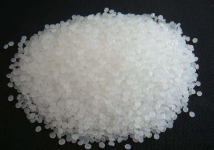read: 409 time:2025-07-14 22:22:03 from:化易天下
When it comes to maintaining the appearance of your car, it's essential to be cautious about the chemicals you use. A common question among car owners is: Will acetone damage car paint? Acetone, a powerful solvent, is often found in products like nail polish remover and paint thinners. While it may be effective for various cleaning tasks, its impact on car paint can be severe. In this article, we will explore how acetone interacts with car paint, the potential risks, and safer alternatives for cleaning your vehicle.
Acetone (C3H6O) is a volatile, colorless liquid that is known for its ability to dissolve a wide range of substances, including oils, resins, and plastics. This strong solvent is highly effective at breaking down organic materials, making it a go-to for many industrial and household cleaning applications. However, this same potency is what raises concerns about whether acetone will damage car paint.
Car paint is typically made up of multiple layers, including a primer, base coat, and clear coat. The clear coat, which is the topmost layer, is designed to protect the paint underneath from UV rays, scratches, and environmental factors. When acetone comes into contact with car paint, it can quickly begin to dissolve the clear coat. The solvent action of acetone is strong enough to break down the chemical bonds in the clear coat, leading to a dull, uneven surface.
If left on the paint for too long, acetone can penetrate beyond the clear coat and start to erode the base coat and primer layers. This can result in significant damage, including discoloration, peeling, and even exposing the bare metal of the car body. Therefore, the answer to the question, "Will acetone damage car paint?" is a resounding yes, if not used with extreme caution.
While it is generally advised to avoid using acetone on car paint, there are some situations where it may be employed, but only with great care. For instance, acetone can be used to remove stubborn substances like tree sap, adhesive residue, or old paint splatters. However, this should only be done as a last resort and with the understanding that the area treated with acetone may require immediate refinishing to restore the clear coat.
To minimize the risk of damage, it is crucial to use acetone sparingly. Apply it with a soft cloth, and work quickly to wipe it off before it has a chance to penetrate the paint layers. After using acetone, the affected area should be thoroughly washed with soap and water, followed by applying a protective wax or polish to restore the clear coat's integrity.
Given the risks associated with using acetone on car paint, it's wise to consider safer alternatives for cleaning and spot treatments. Products specifically designed for automotive use, such as tar and bug removers or clay bars, offer a gentler approach to removing contaminants without damaging the paint. These products are formulated to be safe on all layers of car paint, including the clear coat.
Additionally, isopropyl alcohol diluted with water can be an effective and less aggressive solvent for removing certain residues without causing harm to the paint. Always perform a spot test in an inconspicuous area before applying any new product to the entire surface.
In summary, acetone will damage car paint if not handled with extreme care. Its strong solvent properties can quickly deteriorate the protective clear coat and potentially cause further damage to the underlying paint layers. While acetone can be useful for removing stubborn contaminants, it is generally safer to use products specifically designed for automotive finishes. Always prioritize the integrity of your car's paintwork by choosing the right cleaning methods and products.

Jincheng Petrochemical's 300000 ton polypropylene plant successfully trial production, 2024 polypropylene market analysis

The ABS market remains sluggish, what is the future direction?

Market differentiation of bisphenol A intensifies: prices rise in East China, while prices generally decline in other regions

The production method and process flow of silicone acrylic lotion, and what are the common raw materials